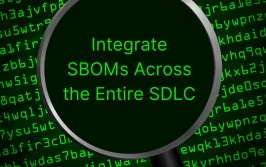It is critically important to secure Cloud Environments and Applications given that the world is now a global village. Two solutions that are critical for these purposes in organizations are Application Security Posture Management (ASPM) and Cloud Security Posture Management (CSPM). Each performs a security function, though they serve the function in different settings and with different emphases. In this article, you will be able to learn about what ASPM and CSPM are, how they are used, and what distinguishes them. Moreover, we will indicate what can be done with each of the tools and the technologies that are typically employed when implementing each kind of solution.
What is ASPM?
ASPM stands for Application Security Posture Management which can be a framework or a tool that aims to assess and enhance application security across the SDLC. ASPM is specifically centered on the processes of risk management for security threats in application development and deployment. This also involves the constant assessment of the application vulnerabilities, configurations, and their conformity to security policies and standards.
Key Uses of ASPM:
- Vulnerability Management: Scanning and patching of vulnerabilities in the application’s code and settings.
- Compliance Monitoring: Compliance with the set regulatory and security standards of the various applications.
- Security Policy Enforcement: Security policies must be applied and maintained throughout development.
- Continuous Monitoring: Offering visibility into the security of the applications in real-time.
What is CSPM?
Cloud Security Posture Management (CSPM) is a tool that helps monitor and manage cloud environments. CSPM tools ensure that cloud infrastructure is set up correctly and follows security rules and standards. They handle the security and compliance of cloud resources in IaaS, PaaS, and SaaS models.
Key Uses of CSPM:
- Configuration Management: Protecting the settings of the cloud resources.
- Compliance Checking: Supervising cloud environments for adherence to GDPR, HIPAA, and PCI-DSS standards.
- Threat Detection: Recognizing risks associated with security in the cloud.
- Visibility and Reporting: Reporting the state of security of cloud resources with more elaborate descriptions.
Key Differences Between ASPM and CSPM
To sum up, although both ASPM and CSPM are aimed at improving security, they are quite different in terms of their scope, goals, and practical application. Here are the key differences: Here are the key differences:
- Scope and Focus
- ASPM: The primary concentration is on the protection of applications. It entails the identification and control of risks, settings, and policy issues when developing and deploying applications. ASPM tools are usually incorporated into the CI/CD process to guarantee that security is not compromised at any stage of the application’s development.
- CSPM: Takes into account the protection of cloud structures and solutions. CSPM tools are constantly scanning the complete cloud environment starting with virtual machines, storage, database, and even network configuration to ensure that they are well secured and in compliance with the policies and regulations.
2. Implementation
-
- ASPM: Usually embedded into development tools and systems, for example, into IDEs, version control systems, and CI/CD systems. ASPM tools give developers and security teams advice and suggestions on how to secure an application right from the development phase.
- CSPM: Used within cloud environments to monitor and evaluate the state of security and compliance of the resources in clouds. CSPM tools have features such as dashboards and alerts to inform the security team about threats and compliance concerns.
3. Examples of Capabilities
- ASPM:
- Static Application Security Testing (SAST): Studying source code to find flaws without running the code.
- Dynamic Application Security Testing (DAST): Static analysis of source code to find out the flaws; Dynamic analysis of running applications.
- Software Composition Analysis (SCA): Open-source component
library risk: how to find and mitigate the threats. - Security Policy Enforcement: This is all about guaranteeing that the security policies are implemented right across the development life cycle.
- CSPM:
- Configuration Management: Maintaining that the cloud resources are optimally set up to meet the recommended standards.
- Compliance Auditing: The other activity is the ongoing scanning of the cloud environments to ensure that they meet the set regulatory requirements.
- Threat Detection and Response: Safeguarding cloud security risks and threats and how to deal with them.
- Visibility and Reporting: Enabling users to get detailed reports and graphical representations of the security status of cloud resources.
Detailed Examples of ASPM and CSPM Use Cases
ASPM Use Cases:
Preventing Vulnerabilities in Code:
- As a web application is being developed, an ASPM tool works with the planning Integrated Development Environment to search for vulnerabilities as the code is being developed. The tool gives you an immediate outcome of possible security risks including SQL injection, cross-site scripting (XSS), and insecure settings. This aggressive approach assists the developers to fix the holes before the application is let out on the market.
Ensuring Compliance in CI/CD Pipelines: Ensuring Compliance in CI/CD Pipelines:
- An organization’s applications used in a financial institution need to be regulated by ASPM to meet certain requirements such as PCI-DSS. The ASPM tool is a plugin that can be installed into the CI/CD pipeline whereby the tool scans applications for compliance if the applications are built. If there is a conflict in compliance, then the pipeline stops and informs the development group of the required changes.
CSPM Use Cases:
Securing Cloud Configurations:
- In the transition process, an organization that is opting for the cloud service employs CSPM for the protection of the cloud environment. The CSPM tool constantly scans the cloud configuration including the IAM policies, storage bucket permissions, and Network security group to check if it meets the recommended security policies. If for instance a certain storage bucket has been configured to be too open, then the tool creates an alert that the security team can then respond to.
Continuous Compliance Monitoring:
- An e-commerce company with multiple locations applies CSPM to ensure compliance with various standards like GDPR and HIPAA. The CSPM tool is always checking on the cloud for any compliance with these regulations and the results and ways to fix the issues provided. This assists the company in minimizing possible fines and damage that could be caused to the reputation of the company in the event of failure to comply with the law.
Underlying Technologies Used in ASPM and CSPM Solutions
The applied effectiveness of ASPM and CSPM tools is strongly influenced by the technologies that they are based on. Here’s a closer look at the technologies commonly used in each type of solution: Here’s a closer look at the technologies commonly used in each type of solution:
ASPM Technologies:
Static Application Security Testing (SAST):
SAST tools act on the source code or compiled code, in bytecode or binary form, to find weaknesses. It is equally useful in early identification of the problems that would otherwise cause problems to the developer once deployment has taken place.
Dynamic Application Security Testing (DAST):
Dynamic tools check the functioning application and reveal such vulnerabilities which can be unnoticed in the source code. It involves a tool that launches a fictitious attack to determine the vulnerabilities of an application’s operating environment.
Software Composition Analysis (SCA):
SCA tools help to detect and address risks that can be present in frequently used open-source parts and libraries. They give information on the security and licensing issues that are likely to be encountered when adopting third-party software.
The applied effectiveness of ASPM and CSPM tools is strongly influenced by the technologies that they are based on. Here’s a closer look at the technologies commonly used in each type of solution: Here’s a closer look at the technologies commonly used in each type of solution:
Security Information and Event Management (SIEM):
SIEM systems also combine security information from multiple components and tools, when trying to identify a threat. ASPM tools can be incorporated into SIEM implementations to improve the systems’ monitoring and alerting.
- Policy-as-Code: Policy-as-Code entails the practice of making the policies, in this case, security ones, to be defined, managed as well as enforced through code. This technology helps in applying security policies from the design phase right up to the actual development phase of the software being developed.
- Management (SIEM): SIEM systems also combine security information from multiple components and tools, when trying to identify a threat. ASPM tools can be incorporated into SIEM implementations to improve the systems’ monitoring and alerting.
- Policy-as-Code: Policy-as-Code entails the practice of making the policies, in this case, security ones, to be defined, managed as well as enforced through code. This technology helps in applying security policies from the design phase right up to the actual development phase of the software being developed.
CSPM Technologies:
-
- Configuration Management Databases (CMDB):
- CMDBs contain data on configurations of the cloud resources. CSPM tools utilize this data to evaluate the existing security status of cloud environments and their configuration’s compliance with the best practices.
-
- Cloud APIs:
- CSPM tools use the APIs of the cloud provider to collect information about cloud resources. This makes it possible to monitor the cloud environment and have a real-time view of the same.
-
- Machine Learning and AI:
- Machine learning and AI technologies enable CSPM tools to find patterns and anomalies in cloud-config. These technologies improve the threat identification and response measures.
- Compliance Frameworks:
- CSPM tools integrate compliance frameworks such as GDPR, HIPAA, and PCI-DSS to ensure compliance checks are automated. These are the frameworks that give CSPM tools the parameters they use to analyze cloud conditions.
- Security Orchestration, Automation, and Response (SOAR):
- Machine Learning and AI:
- CSPM solutions are interfaced with SOAR platforms for managing the workflow in incident response. They include faster remediation of security issues in the cloud through this technology.
Integrating ASPM and CSPM for Comprehensive Security
Although ASPM is designed for use as an application security framework and CSPM is designed for use as a cloud security framework, using both together can give end-to-end security for applications and cloud resources. Here’s how organizations can benefit from using both ASPM and CSPM: Here’s how organizations can benefit from using both ASPM and CSPM:
-
- End-to-End Security:
- Integrating ASPM and CSPM provides a way of attaining security from the application development phase up to the cloud deployment. ASPM helps in securing and being compliant with applications right from the development phase of applications, whereas CSPM helps in being secure and compliant with cloud resources after they have been deployed.
- End-to-End Security:
- Enhanced Visibility and Control:
-
-
- ASPM gives information about the security status of applications, while CSPM helps to evaluate the security of cloud structures. Combined, these tools equip the security teams with a more structured context of their environment to comprehensively target security threats.
-
- Automated Remediation:
-
- ASPM and CSPM can analyze and eliminate security risks and threats on their own. For instance, ASPM can prevent and rectify coding flaws throughout the development process; on the other hand, CSPM can address cloud misconfigurations as they occur. This also minimizes the workload of security teams and ensures maximum security without much intervention from the security department.
- Improved Compliance:
- These tools may have compliance monitoring and reporting capabilities as components of the ASPM and CSPM tools. The integration of these tools assists organizations in achieving compliance with the required standards of the applications and cloud infrastructure. Run of automated compliance checks and detailed reports make it easier to show compliance to the auditors and the stakeholders.
Summary
Therefore, ASPM and CSPM are crucial solutions to secure contemporary digital environments. ASPM is concerned with application security during development and deployment while the other hand, CSPM is concerned with security and compliance of the cloud environment. Thus, organizations can use both tools effectively depending on the situation and threats and have a complete security solution for applications and cloud security.
The integration of ASPM and CSPM covers security from the cloud application, improves visibility, and automates the remediation process and compliance. Thus, the application of these tools will remain a necessity as cyber threats persist in their development and new risks appear in the future. To sum up, ASPM and CSPM can be of great use in the development of applications and the management of cloud resources as they can help prevent security threats and maintain the integrity of digital assets.
This content is brought to you by Scribe Security, a leading end-to-end software supply chain security solution provider – delivering state-of-the-art security to code artifacts and code development and delivery processes throughout the software supply chains. Learn more.



